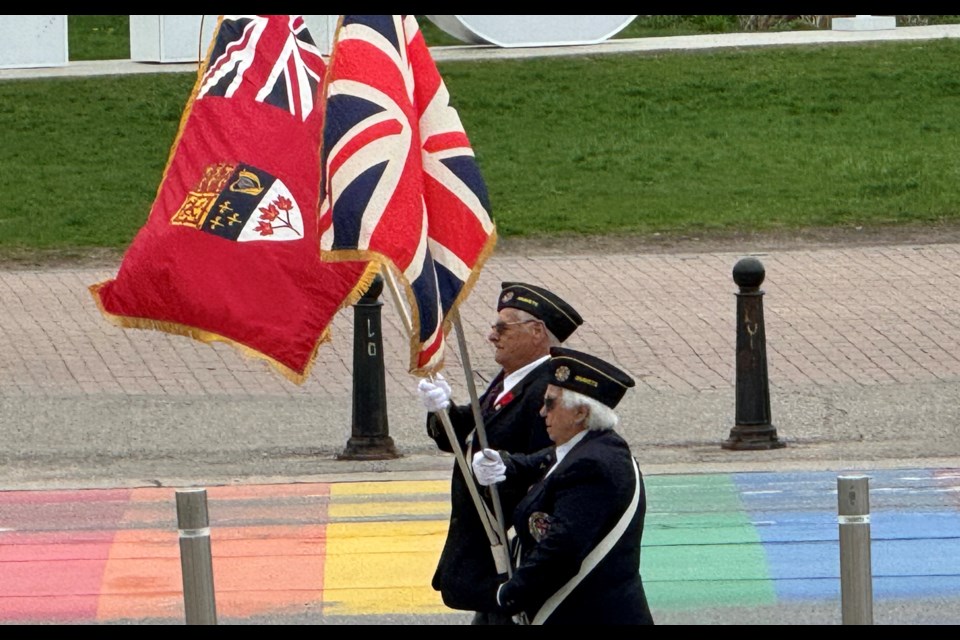The steady sound of boots marching in unison and the unmistakable call of a military bugle echoed across downtown Barrie on Sunday morning for the annual Battle of the Atlantic parade.
The annual event, which takes place across Canada on the first Sunday of May, served as a commemoration for the Battle of the Atlantic — the Second World War’s longest, continuous battle, said Lieutenant Navy Mark Wickson, who was the master of ceremonies for the event.
“We are honouring the sacrifices of the personnel who gave their lives during the Battle of the Atlantic. It was one of the longest battles that the Royal Canadian Navy participated in, in all of the wars that we have been part of,” he told BarrieToday prior to the ceremony.
The event kicked off with a parade that started in the Chase McEachern parking lot and made its way around Meridian Place before finishing in front of the Barrie Cenotaph on Dunlop St. E.
The Battle of the Atlantic parade and day’s events are among the most important of the Navy League of Canada’s calendar year.
“As a member of the navy, it’s amazing to see people come out to this remembrance ceremony, as they do for Remembrance Day,” said Wickson, who is a Canadian Forces cadet instructor and has been with the navy for more than two decades. “It honours the navy specifically, but it also honours the Royal Air Force that participated in that battle.”
Eighty-nine-year-old John Hayter was among the military personnel and veterans who donned their uniforms and attended Sunday’s event to honour the sacrifices of fellow Canadians.
Hayter, who joined the Army Cadets during the Second World War while his father fought overseas, said it’s important to support all those who served.
“We support our sister forces,” said Hayter, who also served as a member of the Grey & Simcoe Foresters regiment and became their honourary colonel and general.
In 1939, the nation’s navy was small with only six destroyers and 3,500 personnel, most of whom were reserves. Many Canadian lives were lost during the almost six-year battle, including 2,000 members of the Royal Canadian Navy, 1,600 Canadian merchant seamen and 752 Canadian airmen.
The Battle of the Atlantic raged from September 1939 to May 1945. As German U-boats tried to interfere with convoys bringing much-needed aid to Europe for the Allies, it was the Canadian contingent that played the crucial role of escorting the supplies to the front.



